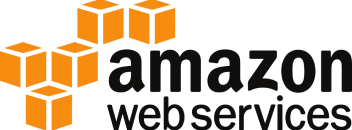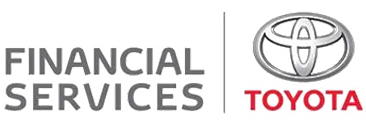An affordable premium solution. Really? Yes!
Frustrated with the high costs of big data analytics? Discover how Databricks offers an affordable solution without compromising on quality. In a world where data is king, managing vast datasets efficiently and cost-effectively is a game-changer for businesses. This blog post delves into why Databricks stands out as the ultimate tool for cloud-based big data management, offering the perfect blend of performance and price. Say goodbye to budget overruns and hello to smarter data analytics with Databricks.
Cloud-based analytics present remarkable opportunities for processing extensive volumes of data. However, they often entail significant expenses. Traditional services typically impose fixed charges or incremental costs based on data usage, posing financial challenges for businesses with fluctuating needs.
Databricks distinguishes itself by offering a dynamic solution. Think of it as a robust toolbox built on open-source Apache Spark, empowering you to address diverse data complexities in the cloud. Unlike opaque services, Databricks grants you greater autonomy over your resources, ensuring you pay only for what you utilise.
Let’s investigate how Databricks can help your organisation optimise your expenditure:
Pay-As-You-Go Model
Say goodbye to fixed fees. Databricks operates on a system called Databricks Units (DBUs), which enables you to pay solely for the computing power consumed. Bid farewell to excessive charges for idle resources!
Example: Suppose your data processing needs vary throughout the month. With Databricks’ pay-as-you-go model, you’ll only incur costs corresponding to your actual usage, ensuring efficient resource allocation and budget management.
Scalability at Your Fingertips
Picture your computer adjusting its power consumption based on your tasks. Databricks offers similar scalability. You can effortlessly upscale to handle large datasets and then downscale to minimise expenses for smaller operations. No more paying for excess capacity!
Example: During peak seasons, such as Black Friday for e-commerce businesses, you can swiftly scale up your Databricks cluster to manage the surge in data influx. Conversely, during quieter periods, scaling down helps optimise costs without compromising performance.
Automated Shutdown
Ever left the lights on unintentionally? Databricks prevent similar oversights with your data. It automatically shuts down idle clusters, preventing the wastage of resources and unnecessary expenses and eventually reducing your carbon footprint.
Example: At the end of the workday, when data processing tasks are completed, Databricks’ auto-shutdown feature kicks in, ensuring clusters are deactivated to conserve resources and reduce costs overnight.
Storage Flexibility
Databricks allows you to choose your preferred cloud storage provider and explore cost-effective storage options tailored to your requirements.
Example: By leveraging Databricks with a cloud storage provider offering competitive rates, such as Azure Data Lake Storage, Amazon S3 or Google Cloud Storage, you can optimise storage costs while benefiting from seamless integration with Databricks’ analytics capabilities.
Open-Source Foundation
Built on Apache Spark, an open-source framework, Databricks eliminates the need for expensive licensing fees associated with some cloud analytics solutions.
Example: Organizations transitioning from proprietary analytics platforms to Databricks can significantly reduce expenditure on licensing fees, redirecting resources towards innovation and growth initiatives.
Choosing the Right Approach
Databricks offers two primary deployment options: virtual machines (VMs) and Serverless computing. VMs provide control and flexibility, ideal for tasks requiring specific configurations. On the other hand, serverless computing, akin to renting a car, delegates resource management to Databricks, making it suitable for more straightforward tasks or unpredictable workloads. Evaluate your priorities – control versus convenience – when selecting between VMs and serverless to optimise cost-effectiveness.
Use Case
Let us now look at the use case. Company ACME needs to acquire data incoming from its ERP and CRM once a day, then update its Kimball style schema for reporting in Power BI. Currently, ACME does not need to process streaming data. On average, on their on-premises Production data warehouse, ACME CIO reported the below to us:
- Users consume up to 4 hours per day of direct SQL queries via their preferred BI tool.
- ETL jobs run for 3 hours every day
- Current EDW is around 10Gb, and it grows by 500Mb every month.
The current data warehouse platform has not been upgraded for the past five years. End users complain that their BI reports take a long time to refresh, especially when several users are connected concurrently to the data warehouse.
With such information and by using a conservative approach in our estimation, we believe that with Azure Databricks, ACME costs to run its data warehouse would be in the vicinity of $400 to $450. Here is a more detailed breakdown:
| Service type | Process | Description | Estimated monthly cost |
| Azure Databricks | ETL/ELT | Delta Live Table with Photon Workload, Premium Tier, Advanced, 1 D4ADSV5 (4 vCPU(s), 16 GB RAM) x 60 Hours, Pay as you go, 2 DBU x 60 Hours | $130.28NZD |
| Azure Databricks | Data Warehouse (SQL) | Serverless SQL Workload, Premium Tier, 1 2X-Small cluster x 4 DBU per cluster x 40 Hours, Pay as you go | $204.81NZD |
| Azure Storage Account | Data Permanent Storage | Data Lake Storage Gen2, Standard, LRS Redundancy, Hot Access Tier, Hierarchical Namespace File Structure, 200 GB Capacity – Pay as you go, Write operations: 4 MB x 10 operations, Read operations: 4 MB x 10 operations, 10 Iterative read operations, 100,000 Archive High Priority Read, 10 Iterative write operations, 10 Other operations. 1,000 GB Data Retrieval, 1,000 GB Archive High Priority Retrieval, 1,000 GB Data Write, 1,000 GB Meta-data storage | $56.48NZD |
| Total | $391.57NZD | ||
Take Away:
While DBUs constitute a substantial portion of expenses, take into account factors like data transfer fees and marketplace integrations. Understanding your organisation’s usage patterns and comparing pricing structures across vendors will help identify the most economical solution for your needs.
Databricks is a compelling choice for organisations seeking cloud-based data analytics solutions without straining their budgets. With its pay-per-use model, adaptable cluster management, open-source framework, and deployment options cater to diverse business requirements. Embrace Databricks to unlock the full potential of your data without succumbing to financial constraints!
Are you ready to harness the power of Databricks and transform your data analytics strategy while optimising costs? Book a free consultation with our experts or myself to explore cost-saving opportunities or request a demo to see Databricks in action. Start your journey towards efficient and affordable data management today.







































